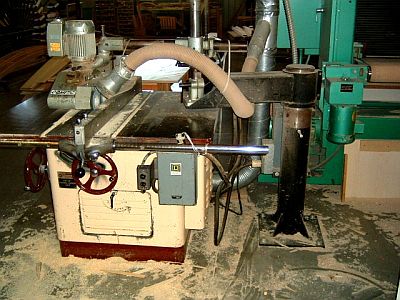Question
I recently started having problems with my 20+ year old DJ-15 jointer, which has long been a sure thing in my shop. It seems that whether I am jointing a face or an edge, the jointer will cut heavy at the beginning of the pass, and light at the end. This can eventually result in a board being 13/16 on one end and 15/16 on the other. I checked the tables for parallel. It seems the infeed table is slightly out of parallel, being about 1/64 lower at the cutterhead. I checked the antique owner's manual which does not address an adjustment here. Does anyone know of a way to adjust the table for parallel? I do not see any obvious adjustments.
Forum Responses
(Solid Wood Machining Forum)
From contributor K:
The tables on this machine are each supported by pins in 4 eccentric bushings in the base casting. You will need an accurate straightedge to get the tables coplanar, ideally as long as the 2 tables and straight within .002", as well as a set of feeler gauges. Start by checking both tables for straightness over their length. The outfeed table is more important, and should be within .002". Concave is worse than convex. If they are much worse than that spec, you may be looking at flattening the tables. Most likely, since you only recently began having problems, table alignment is the culprit. Check to see if the outfeed table is parallel to the cutterhead, and check it for twist by setting the straightedge diagonally from corner to corner. If it is twisted, you can torque it by adjusting one of the eccentrics (you may need to make a spanner, or you can try to turn it with vice grips or a pipe wrench after unlocking it - driving it with a punch may break the bushing). Go a little bit at a time and keep checking with feeler gauges under the straightedge until all is flat. Then move to the infeed table and adjust the far end down until the tables are inline. It's a fussy process, but eventually you will get it. If the tables are coplanar and the knives are set flush with the outfeed or .001" high, all should be well.
